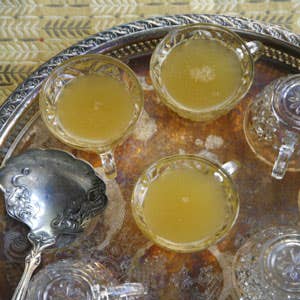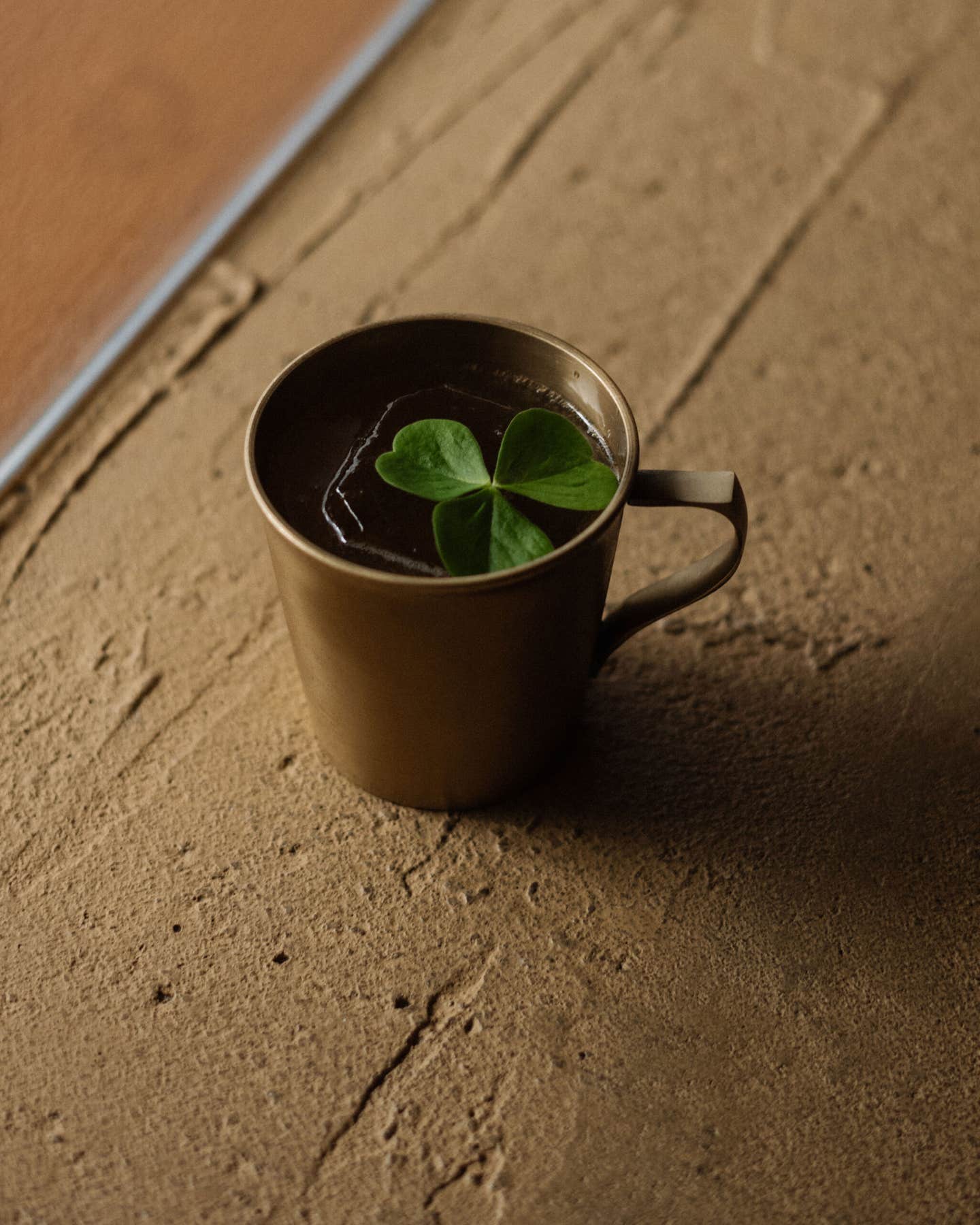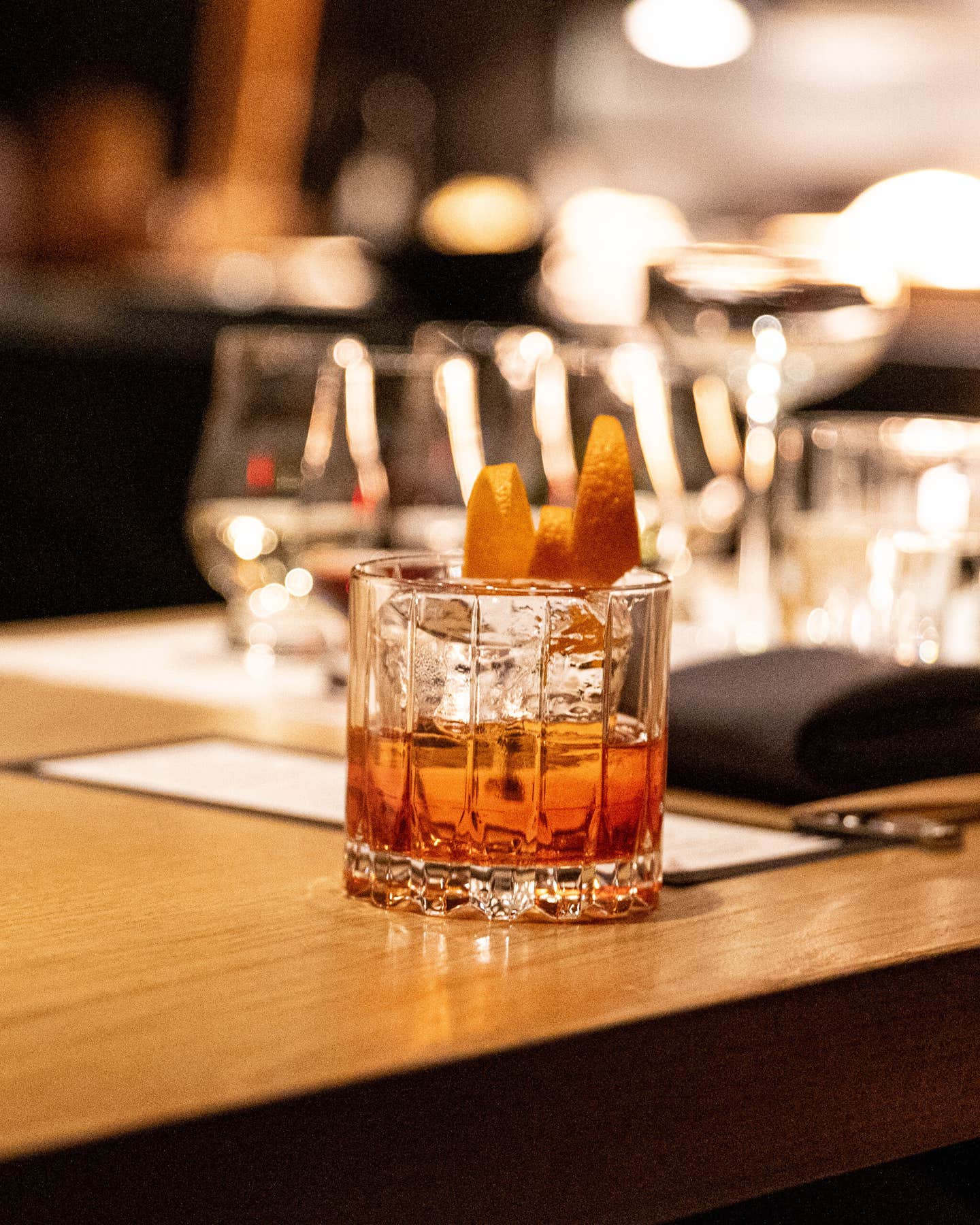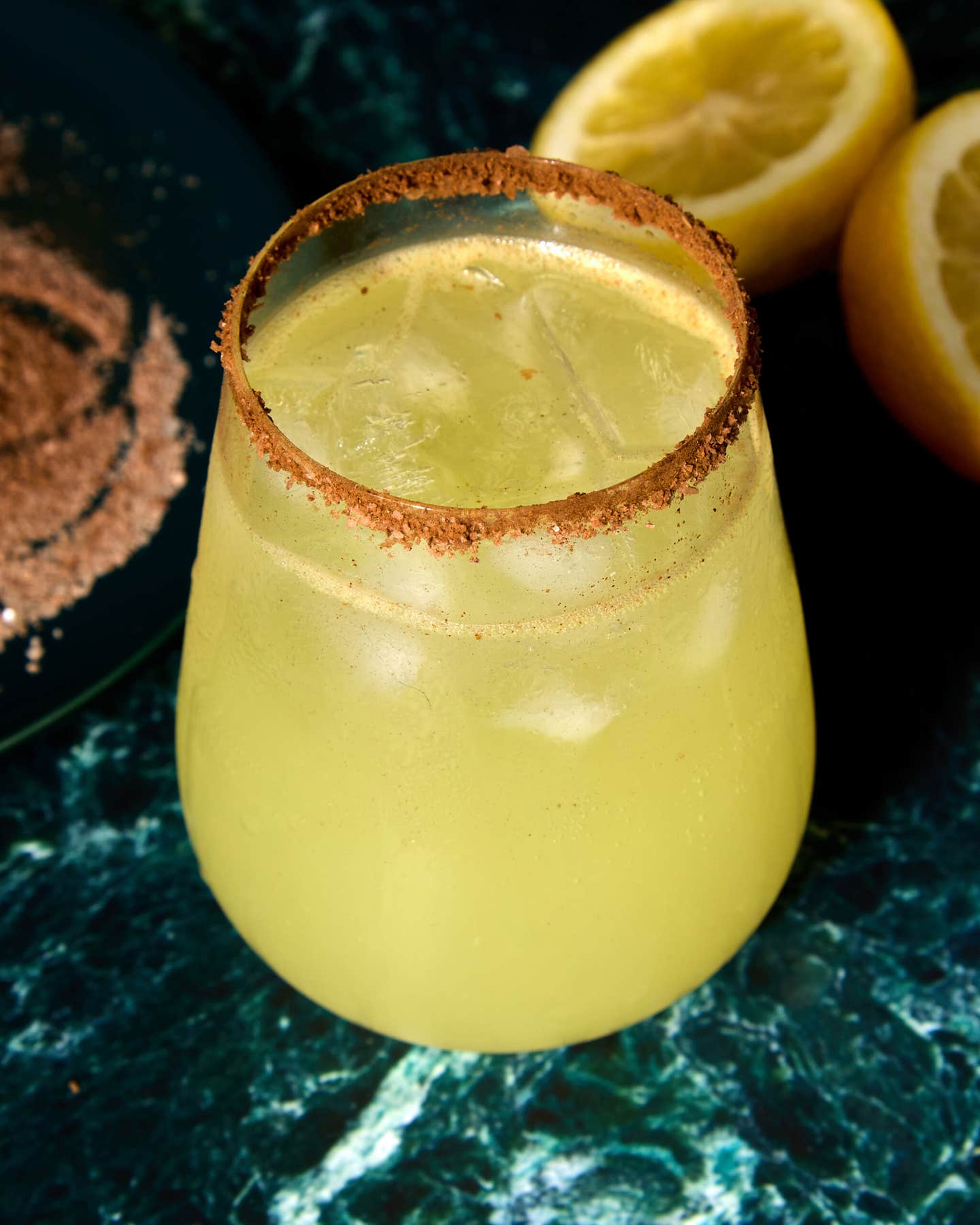
With Glasses Raised: All About Punch
Almost ten years ago, I fell into writing about cocktails. It began as a sideline to my job as an English professor, but before very long it had metastasized into a career—a thoroughly enjoyable one, to be sure, but not without its challenges. Spending so much of my time in the company of delightful drinks, I want to share them with friends, but after years' worth of parties given over to measuring, shaking, stirring, fumbling for ingredients, and, worst of all, never getting a chance to talk to anyone, I realized that I needed something that I could prepare in advance. It had to be dry and sophisticated and as refreshing as a cocktail but not, perhaps, so immediately intoxicating. And, just as important, it had to have a good story attached to it. There was only one drink I knew that might fit the bill: punch.
Now, punch is one of those if-by-whiskey topics. If by punch you mean the anything-goes catchall favored at fraternity parties or the cloying mix of canned fruit juice and cheap beverage alcohol customarily ladled forth from cut glass at country club dances, it hardly bears considering. If, on the other hand, by punch you mean the social drink that, in its 18th-century heyday, fueled the European Enlightenment, a subtle and delightful blend of fine and often exotic liquors, softened with water, brightened with the freshly squeezed juices of citrus fruit, sweetened with pure cane sugar, and touched with rare spices—a drink assembled according to exacting formulae and shared by kings and gentlemen, poets and adventurers—well, that's rather a different story, isn't it?
In fact, like the word martini, which once denoted a marriage of gin and vermouth and nothing else, and even cocktail, which at one time referred to a mixture of liquor, sugar, water or ice, and bitters, punch used to mean a specific drink, not a whole class of them: a balanced, potent, yet thoroughly quaffable mixture, more or less as I've detailed. As such, from the middle of the 17th century until the middle of the 19th, the shared bowl of punch was the undisputed monarch of the kingdom of mixed drinks. It was with this august tradition in mind that I sought to bring punch back to the party—or to my own parties, in any event.
Punch was the first popular mixed drink to incorporate distilled spirits. Before its invention, people drank their drams straight or poured them into a mug of ale or a tankard of wine. But sometime in the early 1600s, the sailors and traders of the British East India Company either adapted one of the fashionable English refreshments of the day to suit ingredients they found in India, adopted a native Indian drink as their own, or invented something entirely new based on what was available on the spot. There's evidence for all three possibilities, none of it conclusive. The name punch is no help either, as it could have been taken just as easily from the Hindi panch, which means five (presumably from the number of ingredients the drink customarily contained), as it could from the English puncheon, the name for a large cask often used for storing wine.
In the beginning, punch was a simple mixture of five canonical ingredients: lemon or lime juice, sugar, water, "spice" (which could have been anything from nutmeg or tea to ambergris, a musky whale secretion now used only in perfume making), and, of course, liquor. Batavia arrack, a fiery but highly aromatic molasses-and-rice distillate imported from the Dutch East Indies, was the preferred spirit, but Caribbean rum and French brandy were right behind it. The earliest known reference to the drink dates from 1632, appearing in a letter to an India-bound merchant from an English colleague, who strongly warned against drinking it (if punch has a fault, it's the ease with which one can absorb too much of it).
By the 1650s, punch had become a standard British sailor's drink, consumed on ship and shore whenever the ingredients were close at hand; one seafaring parson of the time recalled its flowing "like ditchwater" on a ship he served. By the 1690s, English poets were singing its praises, English lords were filling fountains with it, Dutchmen were drinking it, and Frenchmen were declaring it delicious. Yet, however wide its fame spread, it was still an English drink: as the French writer Alexandre Dumas later put it in his Le grand dictionnaire de cuisine (1873), "Our neighbors the English have a particular taste for punches."
Day and night, gentlemen and would-be gentlemen (and sometimes ladies, too) in London and across the British empire would gather in private homes and in "punch houses" as their designated punch maker (an office of some social importance) manipulated the tools of his trade: silver lemon strainers, elaborate nutmeg graters, elegant whalebone-handled ladles with an old shilling set into the cup for good luck. Once his work was done, the assembled merrymakers would drink glass after glass until they were drunk. The English-born poet Ebenezer Cook described arriving in the British colony of Maryland in 1708 and being met with the sight of "A herd of Planters on the ground, O'er-whelm'd with Punch". One could have witnessed a similar scene at any London punch house of the era, though one was just as likely to encounter heated political discussions, sallies of literary wit, and a profusion of convivial talk.
If it was a hard-tippling age, it was also an inventive one, and Englishmen weren't content to leave the original, five-ingredient recipe alone. By the end of the 18th century, punch makers had learned to expand on that formula: forgoing mere lemon juice, for instance, in favor of a livelier mix of lemon juice and the juices of sweet and bitter (seville) oranges; favoring green tea and champagne over water; or replacing the sugar with a combination of fruit-flavored syrups and fancy liqueurs. What's more, a century of practice produced a repertoire of tricks and techniques for making better punch, from extracting the sweet oil from lemon peels to mellowing the drink with milk, gelatin, or even porter. In short, punch was the first testing ground for the mixologist's art.
Like all arts, though, mixology evolved, and by the middle of the 19th century the only punches in day-to-day use were served by the glass, not the bowl. It was an industrious era, one that didn't look kindly on sitting around all afternoon with friends, ladling punch into yourself. The flowing bowl went into hiding, to be pulled out only for special occasions. Unfortunately, this meant that the master punch makers' secrets were all but lost.
Accordingly, when I started trying to resurrect old punches, I didn't have much to go on; just my memories of riotous doings around the punch bowl that I'd read about in the novels of Fielding, Austen, Thackeray, and Dickens and a wad of enigmatic recipes gleaned from the back pages of various bartenders' guides from the late 19th century (by which time the cocktail and its small-bore kin had seized punch's crown, relegating it to back-of-the-book status).
My first attempts to fill the punch bowl were cavalier. I used the recipes as mere guidelines, changing things for convenience or cost and because I surely knew better than whatever mustachioed old gent wrote the recipe. Used to making cocktails, where dilution is a don't, I would cut back on the seemingly excessive amounts of water the recipes called for. Not surprisingly, the result was chaos. I remember, dimly, one New Year's Eve when I made Philadelphia fish house punch—an 18th-century invention that was the house drink of an exclusive fishing club—for the first time, leaving in the copious amounts of rum and brandy but omitting most of the water. Fortunately, it was a house party out in the country, and nobody had to drive. Or walk, for that matter. On other occasions, rather than take the trouble to make the large block of ice that old recipes usually demand, I'd just dump in a bag or two of supermarket cubes, which would melt more or less instantly and render the punch watery and insipid. And I'd think nothing of using powdered nutmeg instead of grating it fresh, or substituting cheap bourbon for good cognac.
Eventually, though, I learned to place my faith in the punch makers of yore. Some of their methods were easy enough to adopt: making a large block of ice—which will float in the bowl and melt slowly, producing a stronger punch at the beginning of the party and a weaker one at the end (a wholly desirable outcome)—requires nothing more than a number of hours, a largish bowl or pot, and some empty space in the freezer. (See Holidays on Ice) Others necessitated a little rejiggering. Many old recipes include the instruction to use lumps of sugar to scrape the outer peel off a few lemons, thus imbuing the sugar with the lemon's fragrant oil, which makes for a richer punch. Unfortunately, modern sugar cubes lack the abrasiveness or cohesiveness to do the job. If, though, you take a vegetable peeler to the lemons (being careful not to cut into the white pith) and muddle the peels together with loose granulated sugar, you get a similar result. (See Mastering Muddling.)
In the end, most old punch recipes required just a little time and the willingness to take extra pains. For example, making a proper milk punch—a lemon-infused, brandy-based mixture allegedly created by the English playwright and bon vivant Aphra Behn in the late 17th century—involves letting whole milk curdle in the punch and straining out the solids; the product is something so smooth and luxurious as to be absolutely perilous. As for Batavia arrack, a crucial classic-punch ingredient that had been virtually impossible to come by in the United States since Prohibition, I went so far as to have cases air-freighted from overseas. (That's no longer necessary, as a new brand, Batavia-Arrack van Oosten, is available in the U.S. I've also found that, in a pinch, Brazilian cachaça will supply some of the arrack's characteristic fire.)
Nowadays, when I make a bowl of, say, Captain Radcliffe's punch, a delightfully mellow brandy-and-wine affair from 1680, or regent's punch, a favorite of England's famously profligate prince regent that calls for ten ingredients, including champagne, and replaces the customary water with brewed green tea, it may take me a good 40 minutes, including all the juicing and muddling. But when it's party time, all my work is done—unless, that is, I'm making a German punschgluhbowle, in which case all I have to do once my guests have arrived is ignite the bowl and ladle out portions of the warming wine and arrack topped with a corona of glowing flame.
Generally, though, I get to stand back with a glass in my hand and watch a now familiar dynamic unfold. The seasoned veterans, those who have shared a bowl of real punch before, will step up smartly to the sideboard and ladle themselves a cup. The more adventurous of the new recruits will follow, and soon enough, there's a bit of a crowd around the bowl, and rather a jolly one at that. By this point, most of the doubters have broken down and taken a serving or two: there's something compelling about a communal experience, particularly if all it takes to participate is to stand around sipping something wonderful, made with a formula that was last popular when George the Fourth ruled England.
Keep Reading
Continue to Next Story










